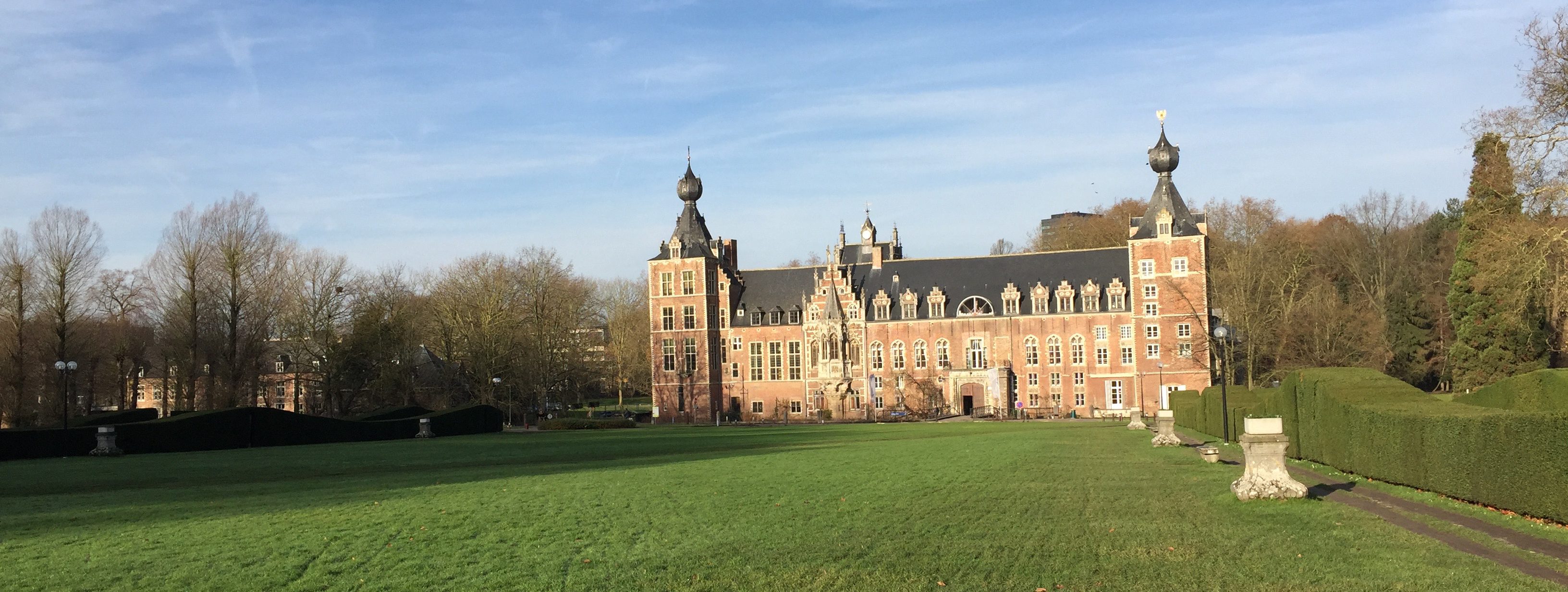Noble living. The castle at Heverlee from Croÿ to Arenberg
Exhibition
from 26 October 2018 till 20 January 2019, University Library Leuven
The exhibition "Noble living. The castle at Heverlee from Croÿ to Arenberg" tells the history of the Arenberg caste in an international perspective. Currently the seat of the Faculty of Engineering and the Department of Architecture, the castle has known a long and rich history. The castle as we know it today was commissioned by William of Croÿ and his wife Mary of Hamal in the beginning of the sixteenth century. The originally L-shaped building has been the subject of many renovation campaigns, each leaving its distinct stamp on the building. The exhibition continues to put the castle at Heverlee in an international perspective, as part of a network of residences transcending the borders of the duchy of Brabant. This network of residences served the nomadic lifestyle of the Croÿ and later Arenberg dynasties and served to represent the ruling dynasties.
The online exhibition telling the history of the Arenberg castle, its network of residences and noble living in the Low Countries from the sixteenth until the nineteenth century is available here.
See Castle stories for a tour of the castle at Heverlee.
Urban Palaces of the Nobility in Early Modern Europe (1400-1750)
Upcoming conference
27 October 2017, LAMOT Conference and Heritage Centre, Mechelen (Belgium)
European palaces in the early modern era were more than mere residences of monarchs and high nobility. They represent one link in a broader residential system, where each element plays a particular role in place and time. Papers can explore urban palaces as part of this residential system and their functioning together with other residences. Which role do these urban palaces play and what is their place in the residential network of the nobility?
Moreover, urban palaces were centers of power with a representative role, carriers of symbols of social and political authority. Case-studies might address how the location, architecture and internal organization reflect the high standing and prestige of the owner as well as possible interaction between the noble residences and the palaces of the reigning prince (emulation aspects?). How is architecture used to express power to the contemporary observer? Can we deduce from this similarities or discontinuities with contemporary court residences? Or, in other words, are there typological similarities between these residences, transcending the boundaries of one city?
Speakers: Dagmar Eichberger, Renate Leggatt-Hofer, Alain Salamagne, Stephan Hoppe, Krista De Jonge, Nuno Senos, Barbara Arciszewska, Sanne Maekelberg, Bernardo García García.
Venue: LAMOT Conference and Heritage Centre, Mechelen (Belgium)
Registration: Attending the symposium is free, but registration is required. Please register by e-mail to krista.dejonge@kuleuven.be
Organization: City of Mechelen and Research Fund KU Leuven

